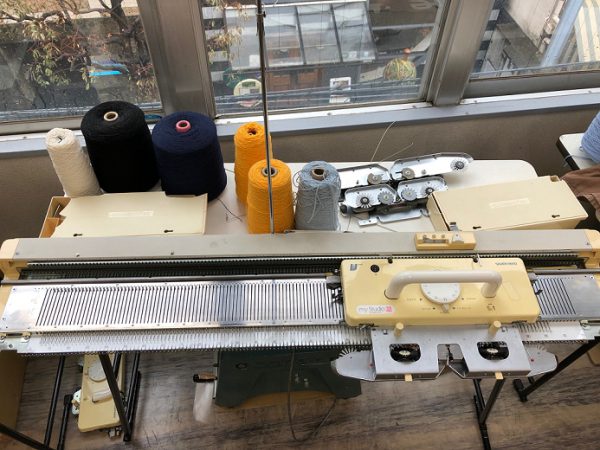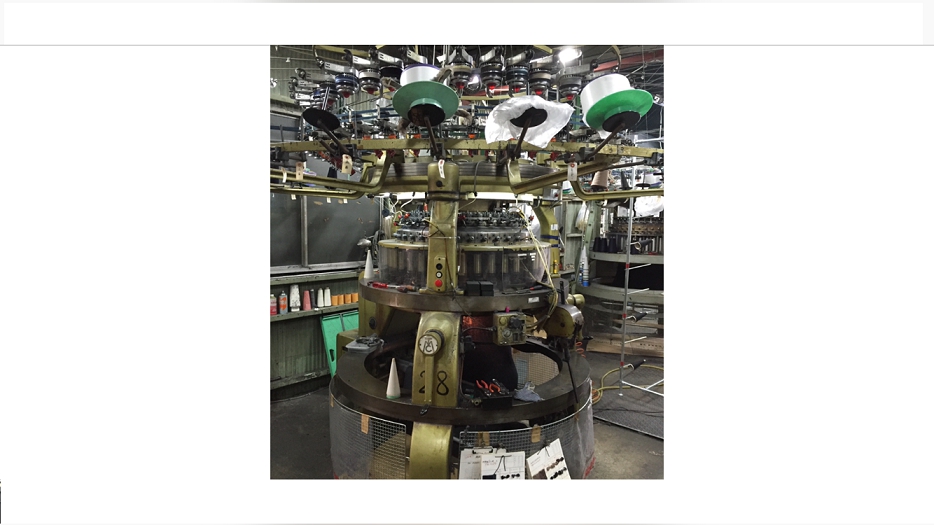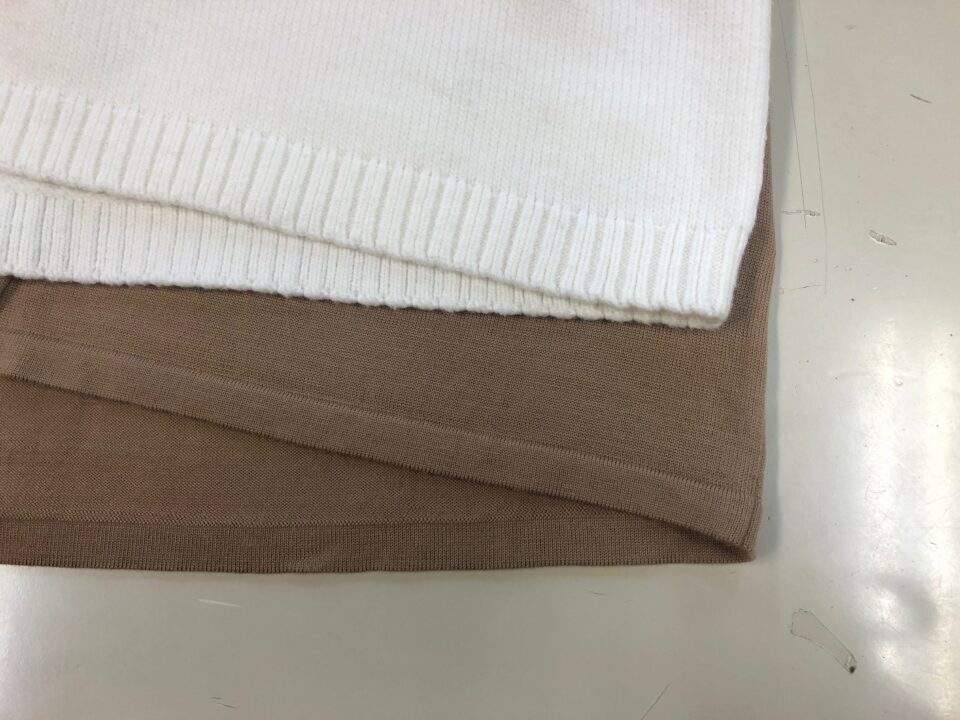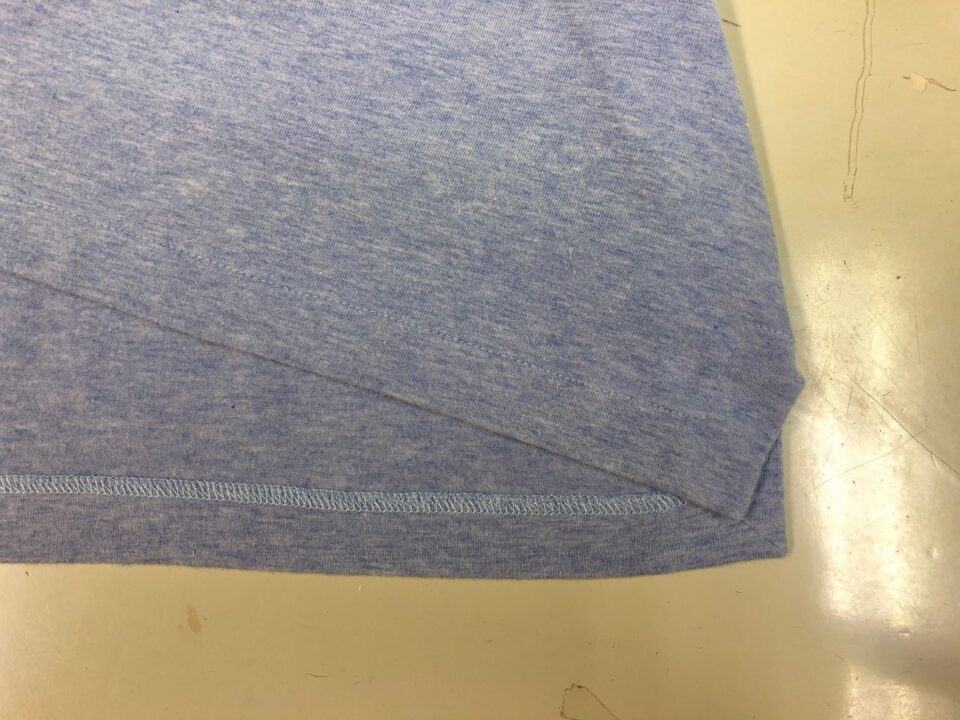KNIT MAGAZINE
- Others
Exploring the Diversity of Knitting Techniques

- Post date:
- November 29, 2023 07:00
- (Update: October 31, 2023 03:47)
KNIT MAGAZINE


Table of Contents
When people think of knitting, they often envision weft knitting, as exemplified by sweaters. However, it’s worth noting that knitted fabrics encompass not only horizontal knits but also vertical knits, circular knits, and more. I apologize for the basic information, but let’s delve into this topic.
<Flat knitting machine (hand side)>

We will exclude weft knitting from our discussion since our experts frequently cover it on our blog. In my previous job, I worked at a circular knitting shop called Sun, so today, I’d like to introduce you to the concept of circular knitting, which may be more familiar to you.
<Circular knitting machine>

Even though they are the same knit, the structure of flat knit and circular knit is completely different.
Speaking of flat knitting, threads come and go from side to side like a home machine (in my house, my mother always untied my brother’s sweater and knitted my sweater …). It runs back and forth, but in circular knitting, the threads run in a spiral shape and the fabric is knitted in a tubular shape.
While winding it at the bottom with the knitting machine shown in the photo, knit it according to the length (30 to 50 meters) after processing one roll. There are about 20 to 30 thread cones around the top of this machine, but this number of knitting is basically the number of steps that can be knitted in one round.
The characteristic of circular knitting is that a large amount of yarn is required at one time, which is a big difference from weft knitting with one piece or at least one yarn.
Then, this knitted raw machine (spiral shape) is sent to the rearranging processing plant for post-processing such as washing, opening, and squeezing.
Then, by cutting a piece of tubular fabric vertically in the middle of the process, it becomes a rectangular knit fabric for the first time.
In the case of flat knitting, the body, sleeves, etc. are linked, washed after sewing, and sewn, but in the case of circular knitting, they are washed at the fabric stage and post-processed such as sewn.
Since such a large-scale process is required, circular knitting is efficient but not suitable for small lot production.
Also, because it cannot be molded like weft knitting, it is cut from the fabric and then sewn (saw), which is called a cut and sew.
By the way, when cutting and sewing from a rectangular knitted fabric instead of molding with flat knitting, it is called a knit saw.
Do you examine a sweater or T-shirt and distinguish between flat knitting and circular knitting? What’s the simplest way to discern this?
Many of the readers of this blog are well-acquainted with weft knitting, so many of you will grasp it, but it’s a fact that there are numerous individuals in the same industry who are unfamiliar with it!
It was to inspect the details of the hem and cuffs!
In flat knitting, most of the knitwork consists of ribbing or plain stitching, but with a cut and sew approach, it can’t be completed without an extra seam allowance, as it might unravel from the cut edge. Therefore, stitching (with various specifications) is necessary.
If you look here, it becomes evident.
Flat knitting (ribs, bag knitting)

Circular knitting (single needle stitch)

This article delves into the variety of knitting methods, beyond the commonly known weft knitting used in making sweaters.
It discusses the differences between flat knitting and circular knitting, providing insights into their unique structures and production processes. Additionally, it offers a straightforward guide to distinguishing between these two knitting styles by examining the details of hems and cuffs.
This informative piece serves as a valuable resource for those looking to expand their knowledge of knitting techniques.
Subscribe Now
To receive the latest updates and insights, subscribe to our newsletter.
Contact Us
For further inquiries regarding this article, please feel free to contact us.